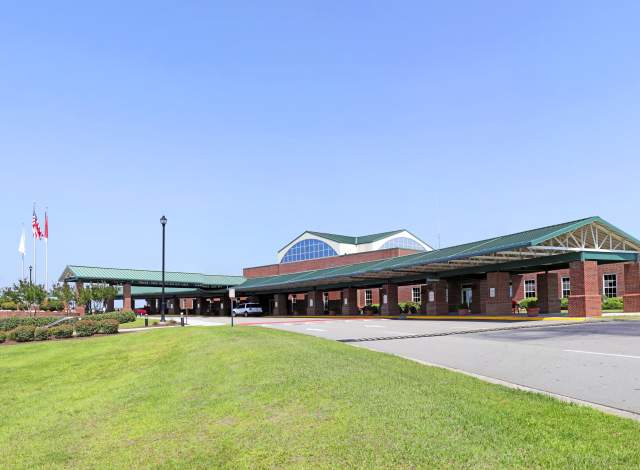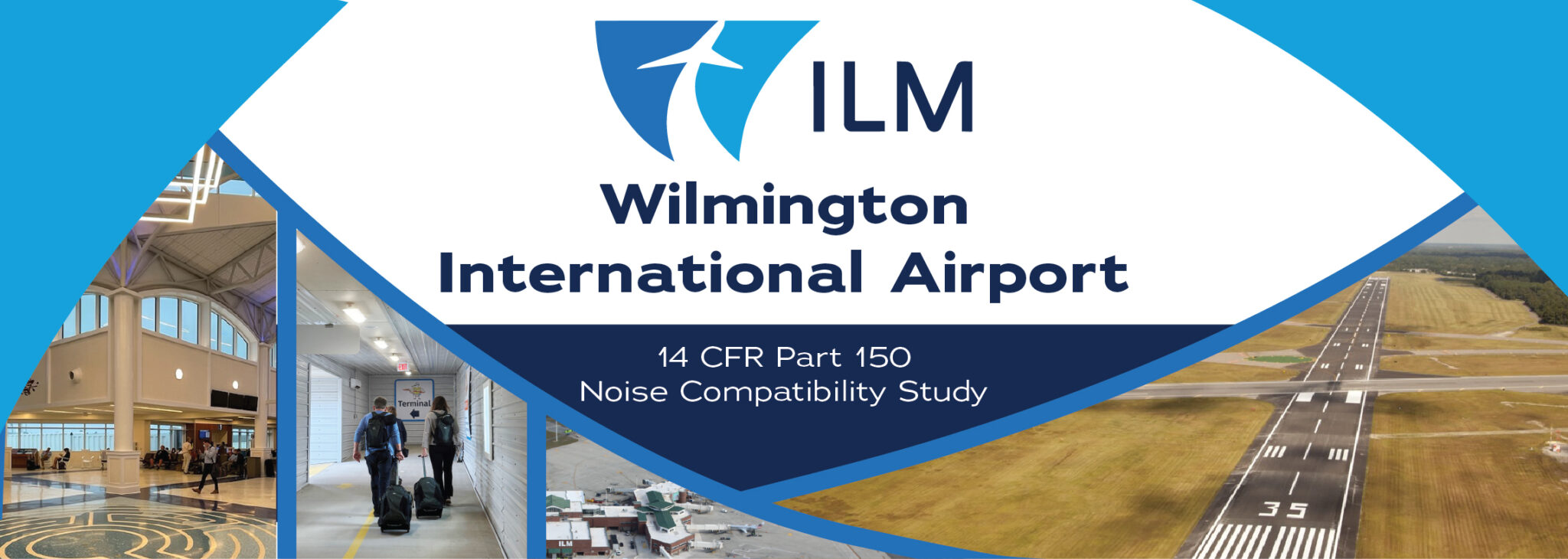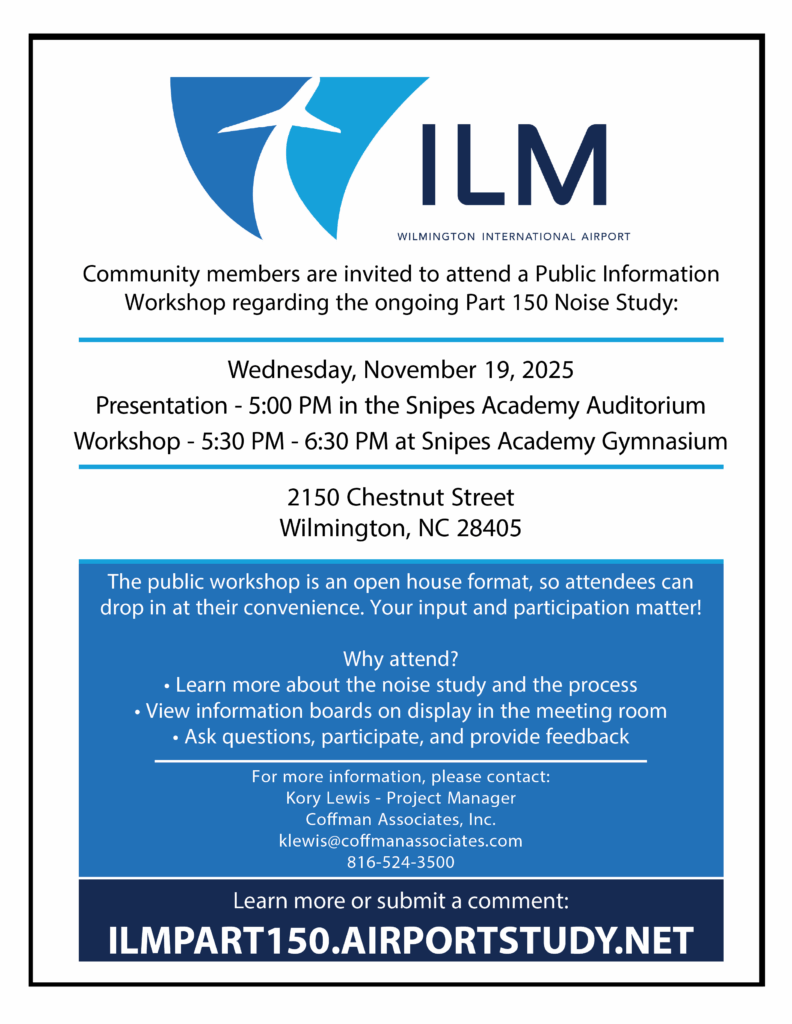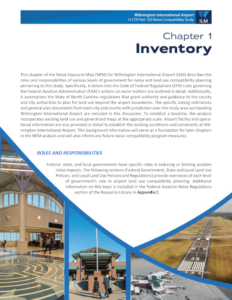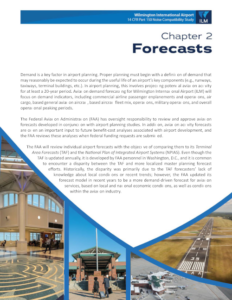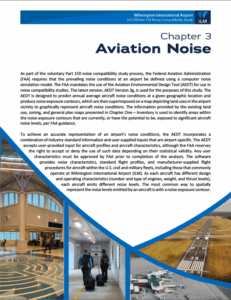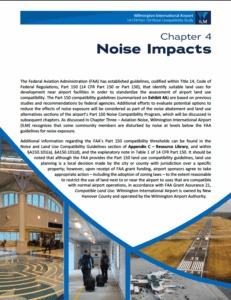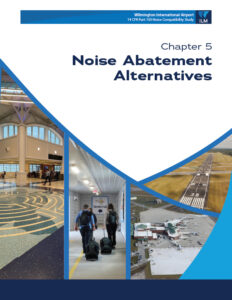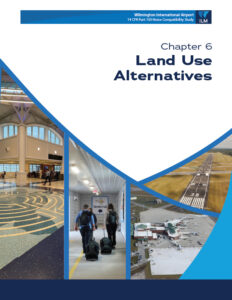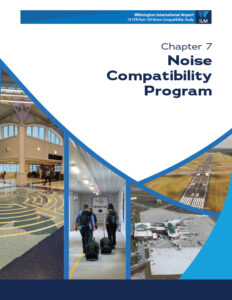About Wilmington International Airport
Wilmington International Airport (ILM) is located approximately three miles northeast of Wilmington’s central business district in unincorporated New Hanover County, North Carolina, and is classified as a small-hub, commercial service airport. Situated on 1,800 acres of land at an elevation of 32 feet above sea level, the airport has two runways — Runway 6-24, which is 150 feet wide and 8,016 feet long; and Runway 17-35, which measures 150 feet wide and 7,754 feet long — and supports the passenger demands of Wilmington and southeastern North Carolina.
About the Part 150 Study
The New Hanover County Airport Authority acknowledges that aircraft operations generate noise and seeks to play a role in balancing airport activities with aircraft noise exposure in the areas where noise impacts are identified. To better understand the extent of airport noise and to assist airports in their efforts to reduce noise impacts, the Federal Aviation Administration (FAA) established the Noise Exposure Map (NEM) process within Title 14 of the Code of Federal Regulations, Part 150 (14 CFR Part 150). This voluntary program outlines the process for evaluating airport noise impacts on communities near airports. In spring 2024, Wilmington International Airport began preparing a noise compatibility planning study, in accordance with 14 CFR Part 150, which will take 18 to 24 months to complete. This study is a cooperative effort between Wilmington International Airport, the FAA, and the surrounding community. This voluntary Part 150 study – which is funded by a grant from the FAA – will include Noise Exposure Maps (NEM) and a Noise Compatibility Program (NCP) for ILM.
It is important to understand what this study does and does not do.
A Part 150 Study:
- Identifies the current and projected annualized aircraft noise levels at ILM using the Day Night Average Sound Level (DNL) noise metric.
- Identifies measures to reduce the noise impacts within the noise exposure contours from aircraft operating to and from Airport through changes in aircraft operations or airport facilities.
- Encourages future land uses which are compatible with aircraft noise, such as commercial or industrial in undeveloped areas.
- Determines methods to reduce the adverse impacts of noise above FAA thresholds in existing residential areas.
- Establishes a procedure to implement, review, and update the program.
A Part 150 Study does not:
- Evaluate aircraft operations from other area airports.
- Consider other types of impacts (air quality, accidents, etc.).
- Use noise metrics other than DNL to determine noise impacts.
- Provide justification for airport expansion.
Schedule
The Part 150 process will take place in phases and will include meetings with community members and leaders, airport business, and other stakeholders.
Study Documents
All study documents will be available on this study site as they are completed in a downloadable PDF format.
Public Involvement
Ensuring that the public is both informed and involved is critical to the success of the master planning process, and there will be several meetings held throughout the study.
FAQs
You have questions, we have answers! From who is funding the plan to who is doing the it to the parts of the plan, we have you covered.
Comments/Questions
If you have a comment or question, please do not hesitate to reach out! You can either use the provided form, or send an email to a member of the project team.
Study Documents
Initiation Brochure
Download a PDF of the project initiation brochure, which explains a bit more about the study, such as why, how, and when it will be done.
PowerPoint from May 15, 2024 Meeting
Part 150 Study Documents
Draft chapters will be posted as the study progresses. Files will be in PDF format and available for download and print.
Appendix A: Planning
Advisory Committee
Appendix B:
Public Participation
Appendix C:
Resource Library
Appendix D:
Letter Of Agreement
Appendix E:
Forecast Approval
Appendix F:
Supplemental Noise
Appendix G:
Noise Measurement Program
Appendix H:
Military Noise Modeling Inputs
Appendix J:
NEM Checklist
Public Involvement
The approach to involve the community is multi-faceted. The Planning Advisory Committee (PAC) is a group of airport stakeholders who have been asked to volunteer their time to aid in the development of the Master Plan. The PAC will be convened for four (4) meetings to review draft chapters as developed by the consultant team. The same draft chapters made available to the PAC will be posted to this project website.
There will also be up to four (4) public information workshops during the study process. The workshops will be conducted in an open-house format where the public can visit with the project team and ask any questions they may have related to the project. The workshops are typically scheduled in the early evening to allow those heading home from work to stop by or to allow others to come after the dinner hour. The date and time of the workshops will be advertised locally and posted on this project website.
Draft chapters of the report will be posted to this dedicated project website so that anyone can learn about the study process and review and comment on the draft material during the study. All community members are encouraged to engage in the process and provide comments to the project team. Interested parties can also utilize the ‘Comment’ feature on this project website. Direct communication with the project managers via phone or email is also acceptable, and their contact information is listed in the ‘Contact Us’ section at the bottom of this website.

